Gestalt principles of perception The whole is greater than the sum of the parts
This post is part of a series of notes I collated during my studies at UCL’s Interaction Centre (UCLIC).
Gestalt psychology is a theory of mind and brain positing that the operational principle of the brain is holistic, parallel, and analogue, with self-organising tendencies.
The Gestalt effect is the form-generating capability of our senses, particularly with respect to the visual recognition of figures and whole forms instead of just a collection of simple lines and curves.
In psychology, gestaltism is often opposed to structuralism and Wundt. The phrase “The whole is greater than the sum of the parts” is often used when explaining Gestalt theory.
Theoretical framework and methodologyPermalink to section titled Theoretical framework and methodology
The school of Gestalt practiced a series of theoretical and methodological principles that attempted to redefine the approach to psychological research.
Theoretical principles:
- Principle of Totality – the conscious experience must be considered globally (by taking into account all the physical and mental aspects of the individual simultaneously) because the nature of the mind demands that each component be considered as part of a system of dynamic relationships.
- Principle of Psychophysical Isomorphism – a correlation exists between conscious experience and cerebral activity.
Based upon the principles above, the following methodologies are defined:
- Phenomenon of Experimental Analysis – in relation to the Totality Principle any psychological research should take as a starting point phenomenon and not be solely focused on sensory qualities.
- Biotic Experiment – the school of Gestalt established a need to conduct real experiments, which sharply contrasted with and opposed classic laboratory experiments. This signified experimenting in natural situations, developed in real conditions, in which it would be possible to reproduce, with higher fidelity, what would be habitual for a subject.
Principles of Gestalt systemsPermalink to section titled Principles of Gestalt systems
The key principles of Gestalt systems are emergence, reification, multi-stability and invariance.
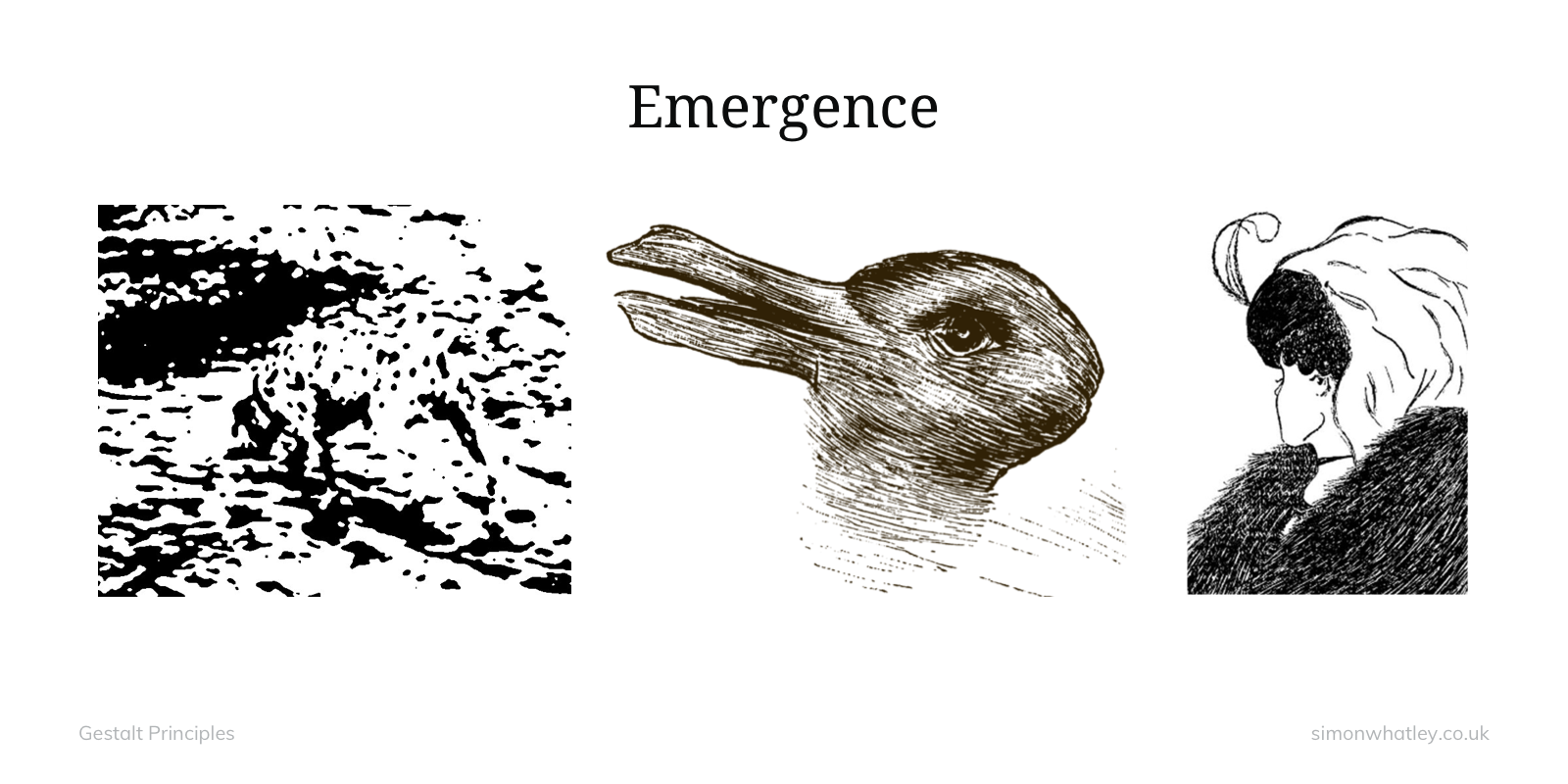
Figure 1: Gestalt principle – Emergence
Emergence is the process of complex pattern formation from simpler rules. It is demonstrated by the perception of the Dog Picture, which depicts a Dalmatian dog sniffing the ground in the shade of overhanging trees. The dog is not recognised by first identifying its parts (feet, ears, nose, tail, etc.), and then inferring the dog from those component parts. Instead, the dog is perceived as a whole, all at once. However, this is a description of what occurs in vision and not an explanation. Gestalt theory does not explain how the percept of a dog emerges.
ReificationPermalink to section titled Reification
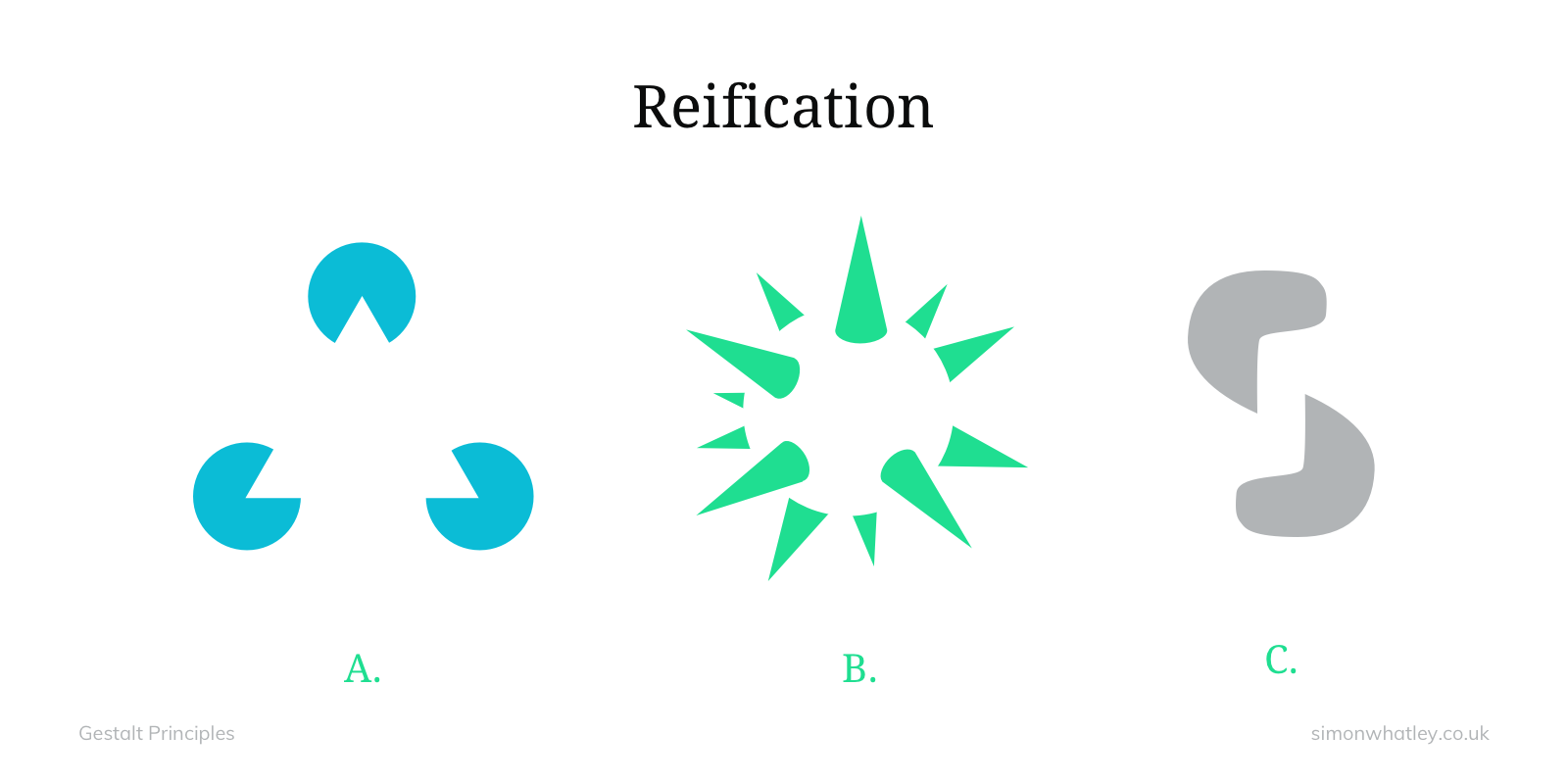
Figure 2: Gestalt principle – Reification
Reification is the constructive or generative aspect of perception, by which the experienced percept contains more explicit spatial information than the sensory stimulus on which it is based.
For instance, a triangle will be perceived in picture A, although no triangle has actually been drawn. In picture C the eye will recognise disparate shapes as “belonging” to a single shape. In B a complete three-dimensional shape is seen, where in actuality no such thing is drawn.
Reification can be explained by progress in the study of illusory contours, which are treated by the visual system as “real” contours.
Multi-stabilityPermalink to section titled Multi-stability
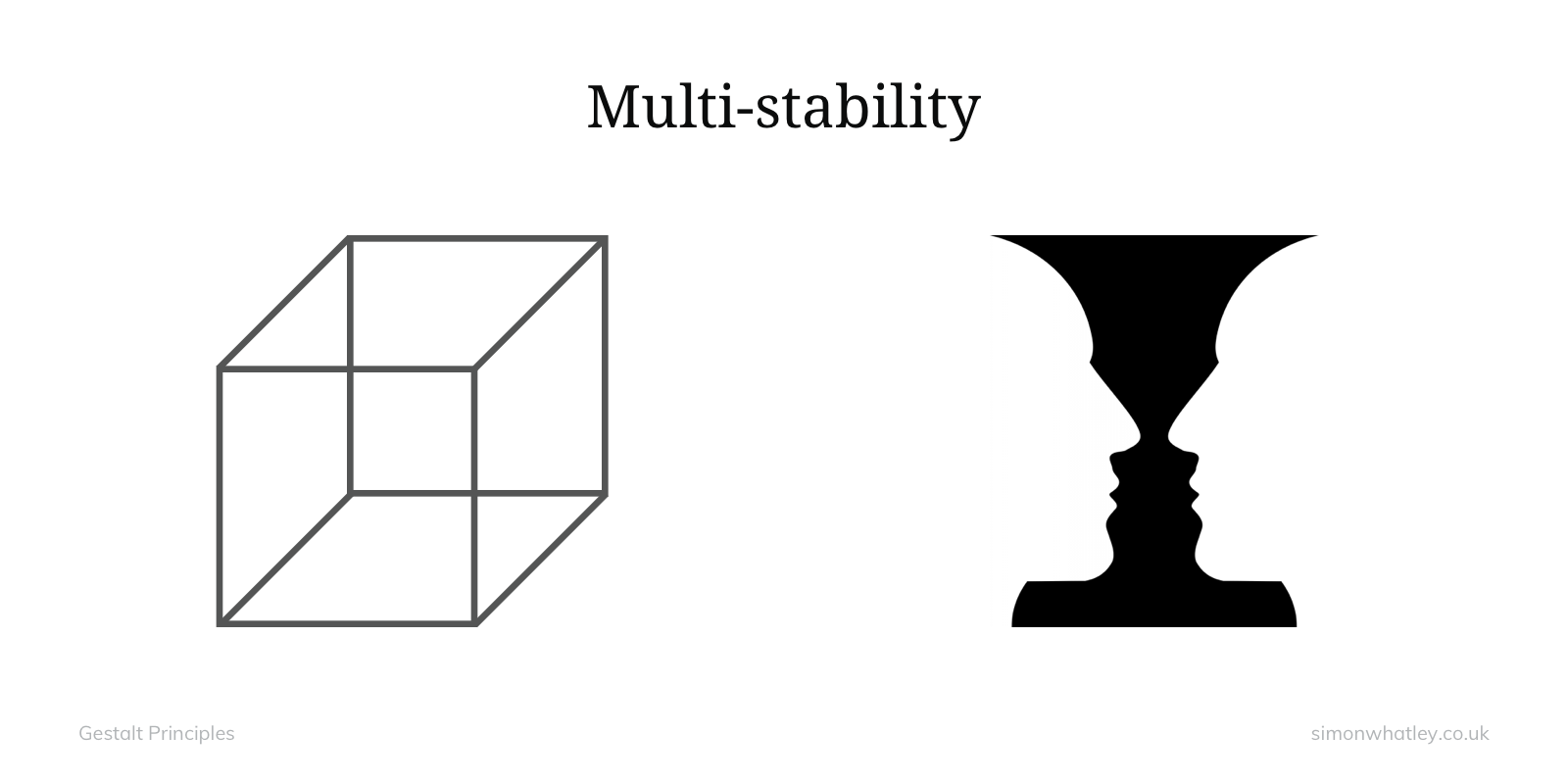
Figure 3: Gestalt principle – Multi-stability
Multi-stability (or multi-stable perception) is the tendency of ambiguous perceptual experiences to pop back and forth unstably between two or more alternative interpretations.
This is seen for example in the Necker cube, and in Rubin‘s Figure/Vase illusion shown here. Other examples include the Impossible trident and artist M. C. Escher‘s artwork and the appearance of flashing marquee lights moving first one direction and then suddenly the other.
Again, Gestalt does not explain how images appear multi-stable, only that they do.
InvariancePermalink to section titled Invariance
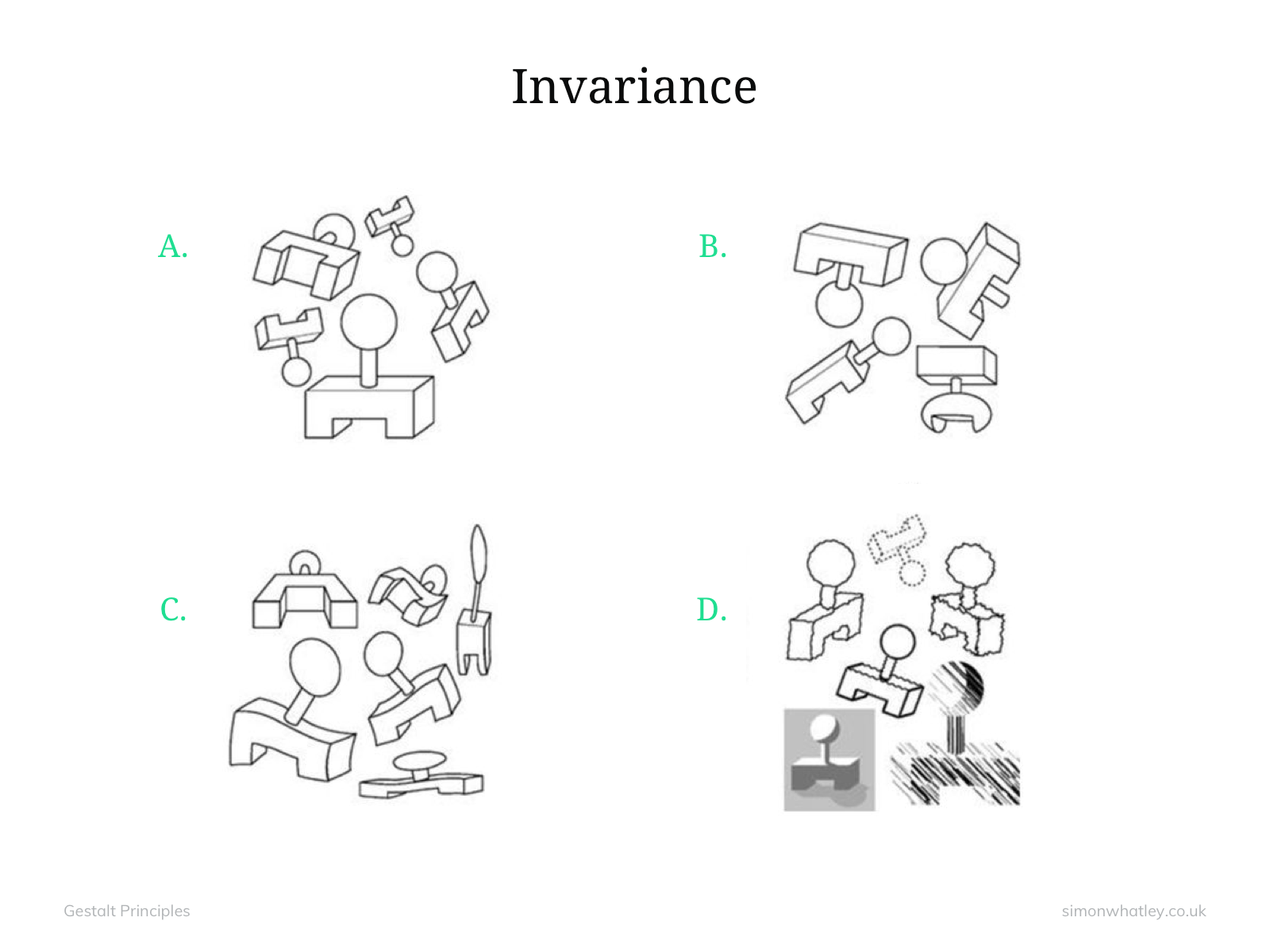
Figure 4: Gestalt principle – Invariance
Invariance is the property of perception whereby simple geometrical objects are recognised independent of rotation, translation, and scale; as well as several other variations such as elastic deformations, different lighting, and different component features.
For example, the objects in A in the figure are all immediately recognised as the same basic shape, which are immediately distinguishable from the forms in B. They are even recognised despite perspective and elastic deformations as in C, and when depicted using different graphic elements as in D. Computational theories of vision, such as those by David Marr, have had more success in explaining how objects are classified.
Emergence, reification, multi-stability, and invariance are not necessarily separable modules to be modelled individually, but they could be different aspects of a single unified dynamic mechanism.
Figure-ground organisationPermalink to section titled Figure-ground organisation
Elements are perceived as either figures (distinct elements of focus) or ground (the background or landscape on which the figures rest).
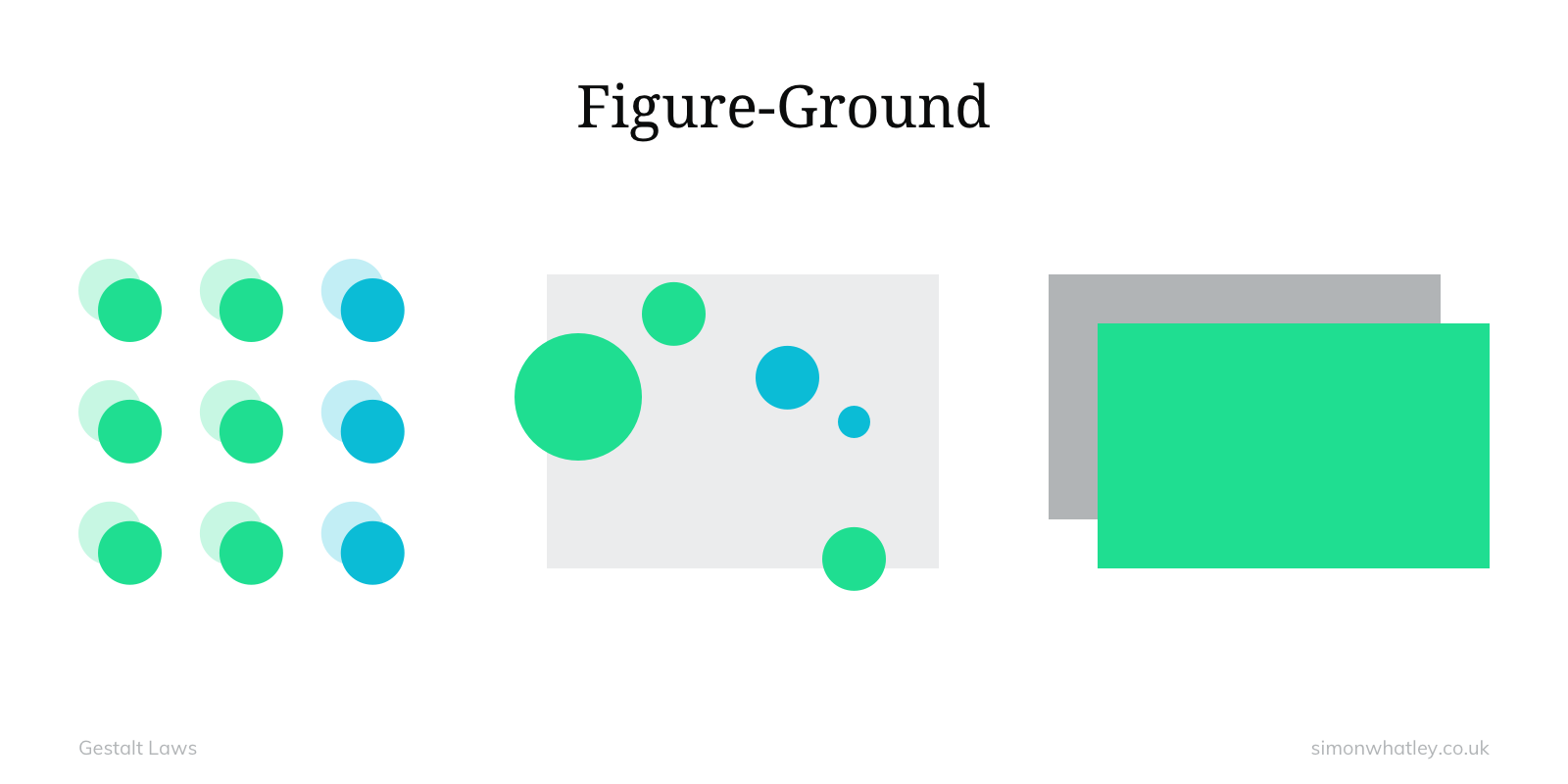
Figure 5: Gestalt – Figure-ground organisation. Example from uxmisfit.com.
Gestalt laws of perceptual organisationPermalink to section titled Gestalt laws of perceptual organisation
Gestalt laws are rules that describe how the human eye perceives visual elements. These principles aim to show how complex scenes can be reduced to more simple shapes. They also aim to explain how the eyes perceive the shapes as a single, united form rather than the separate simpler elements involved.
1. Law of Closure – the mind may experience elements it does not perceive through sensation, in order to complete a regular figure (that is, to increase regularity).
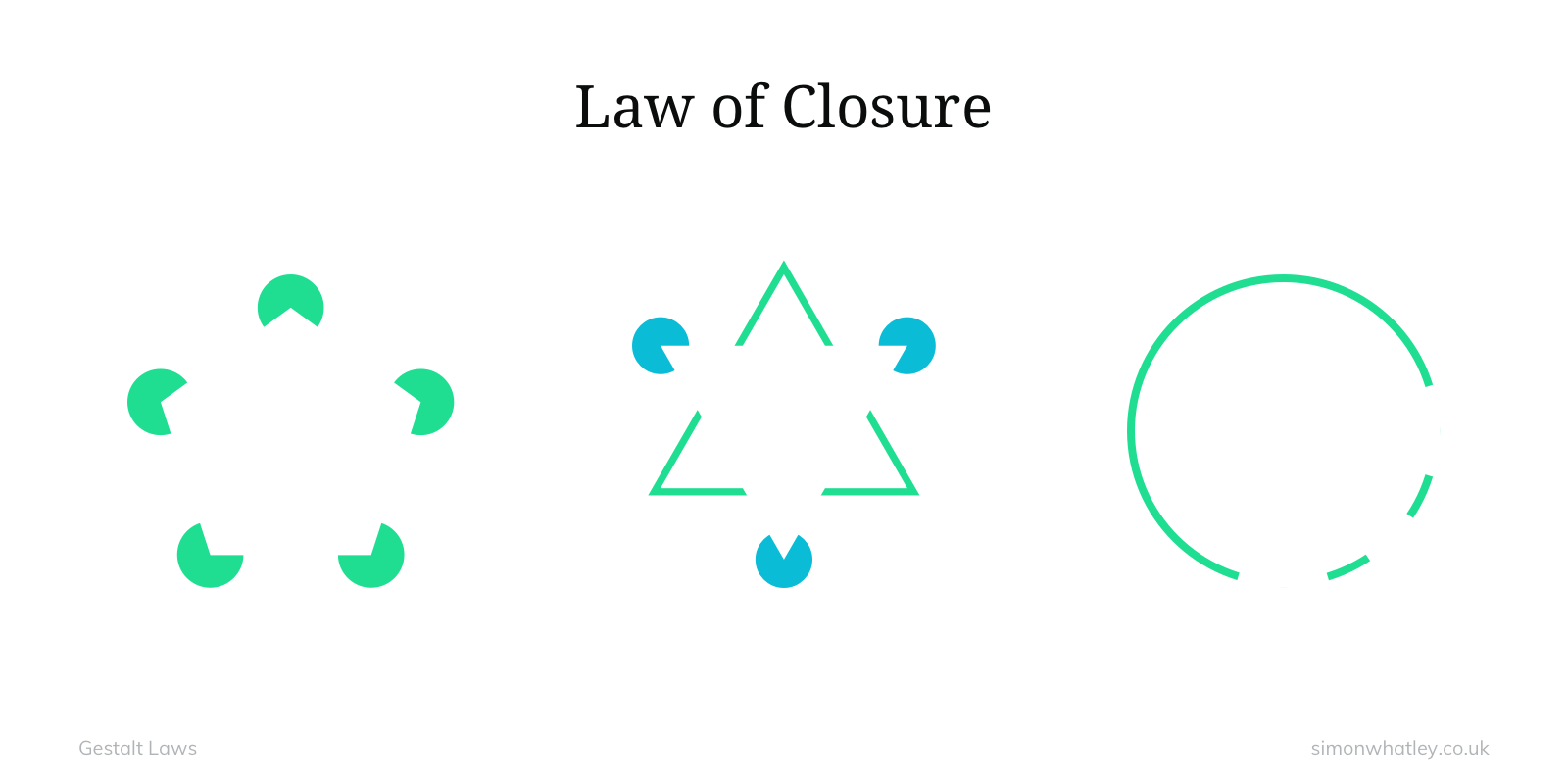
Figure 6: Gestalt – Law of Closure
2. Law of Similarity – the mind groups similar elements into collective entities or totalities. These similarities may depend upon relationships of form, colour, size or brightness.
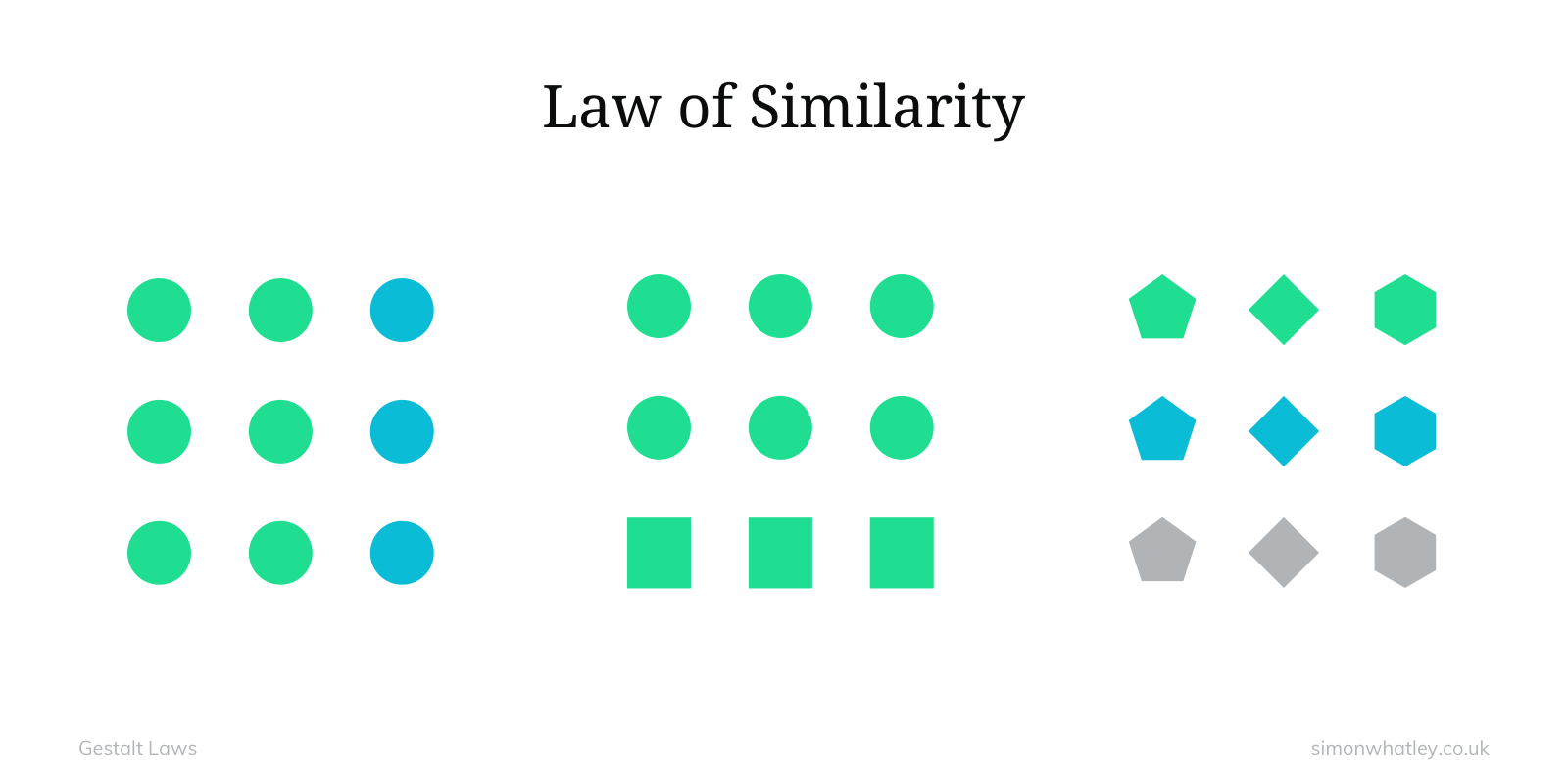
Figure 7: Gestalt – Law of Similarity.
3. Law of Proximity – spatial or temporal grouping of elements may induce the mind to perceive a collective or totality.
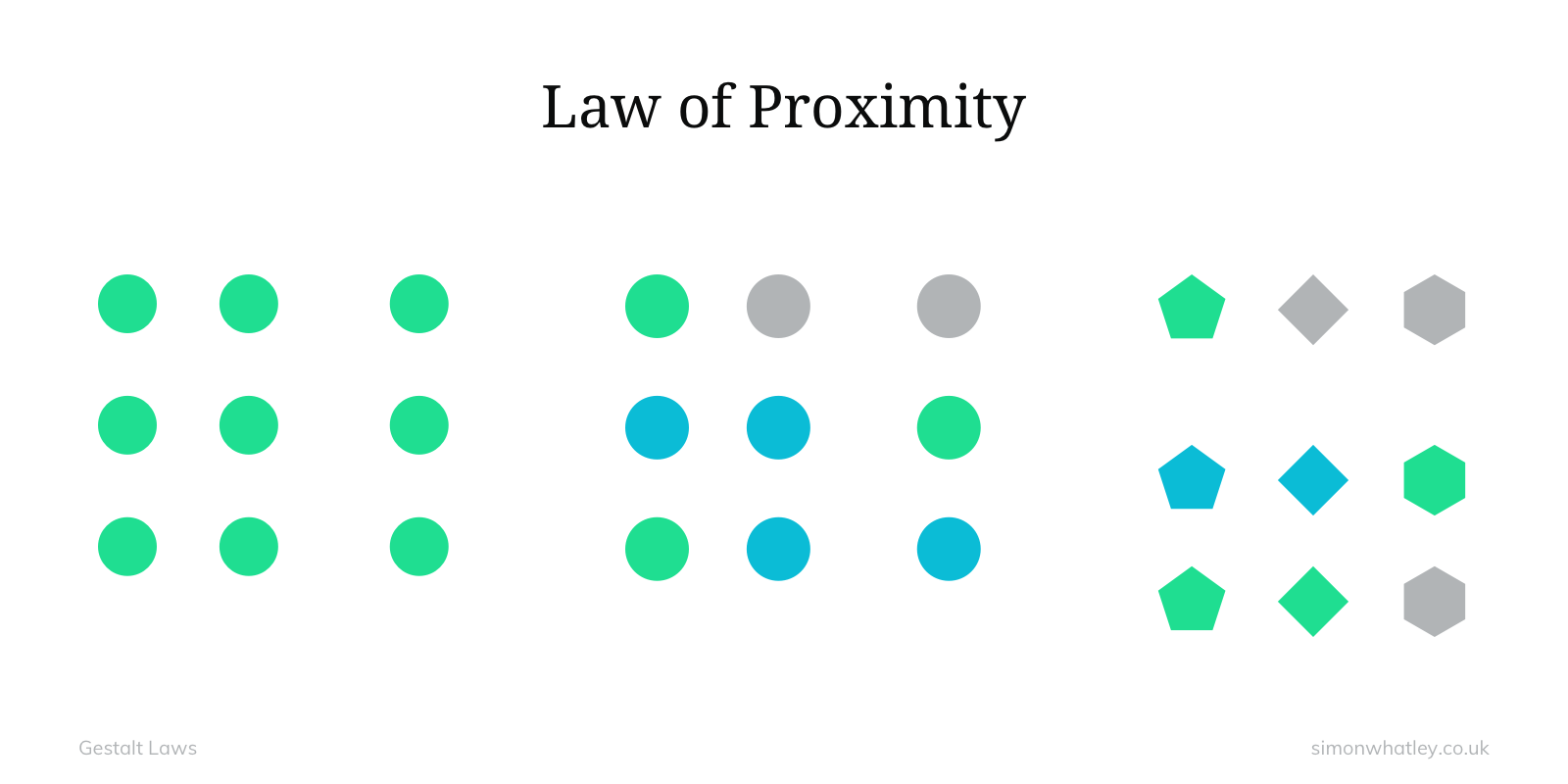
Figure 8: Gestalt – Law of Proximity
4. Law of Symmetry (Prägnanz; figure ground relationships) – symmetrical images are perceived collectively, even in spite of distance.
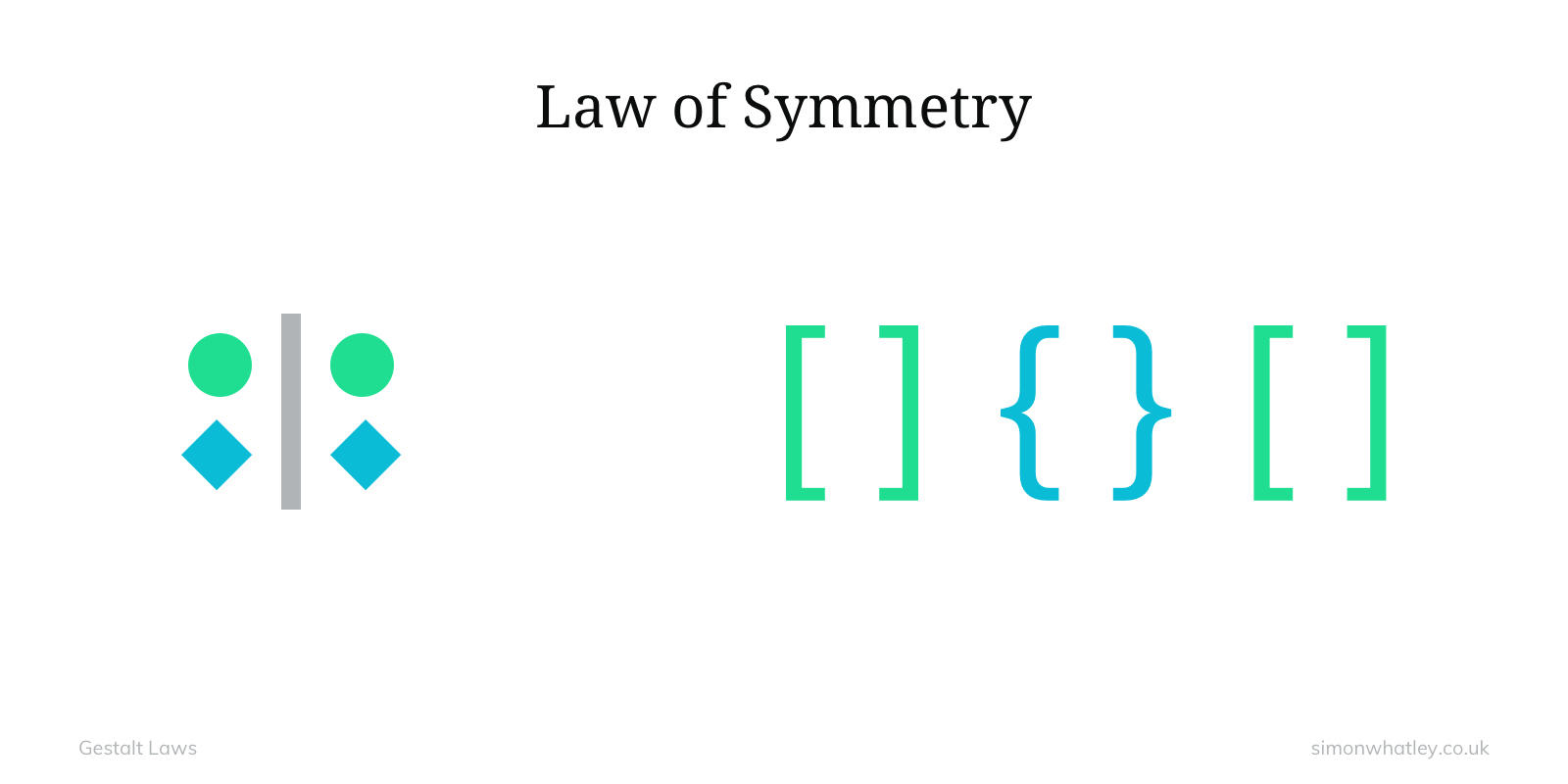
Figure 9: Gestalt – Law of Symmetry
5. Law of Continuity – the mind continues visual, auditory and kinetic patterns.
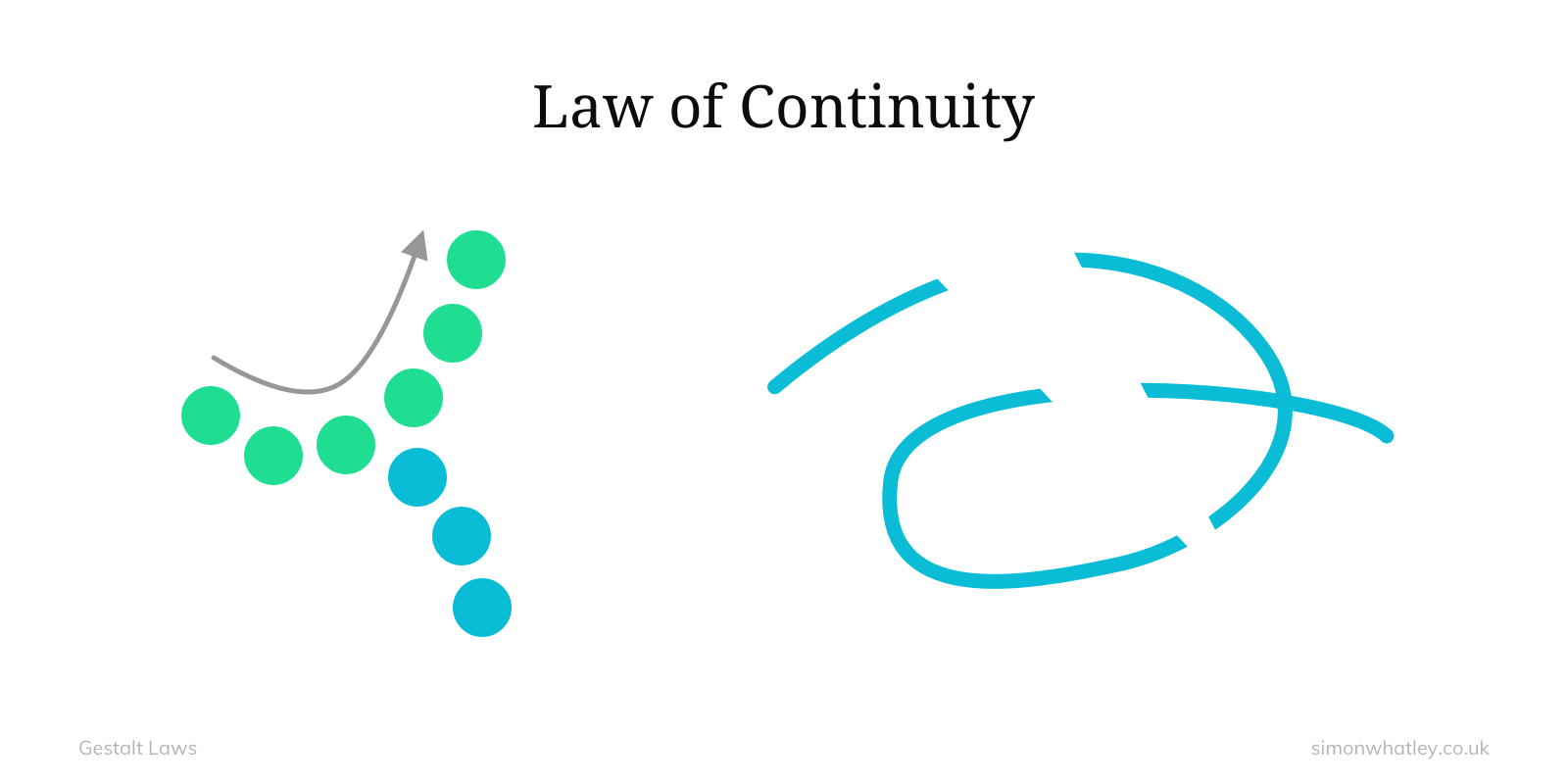
Figure 10: Gestalt – Law of Continuity
6. Law of Common Fate – elements with the same moving direction are perceived as a collective or unit.
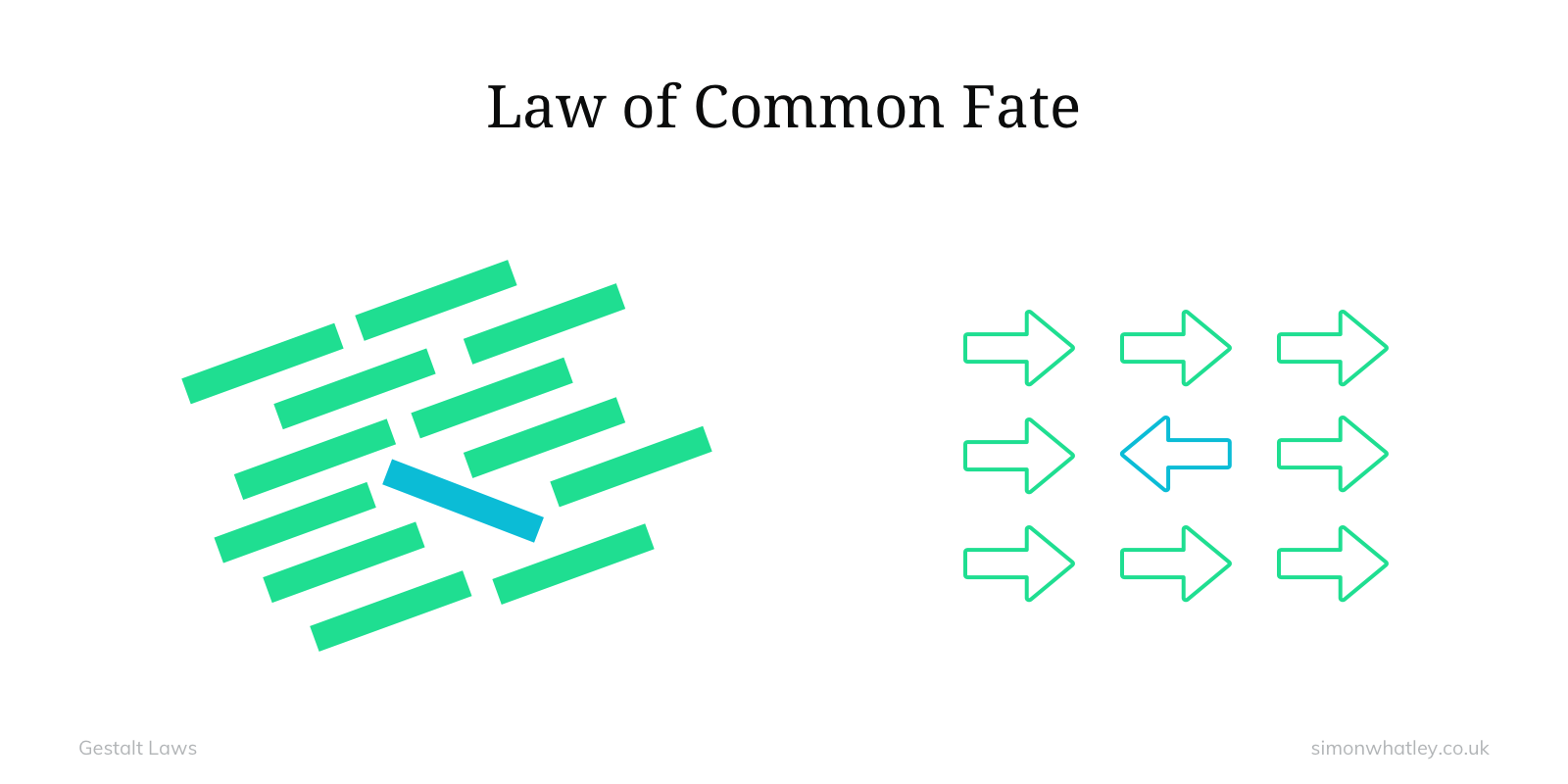
Figure 11: Gestalt – Law of Common Fate
References and further readingPermalink to section titled References and further reading
Updated on: 10 February 2021